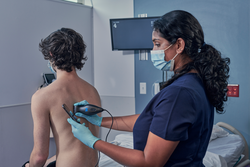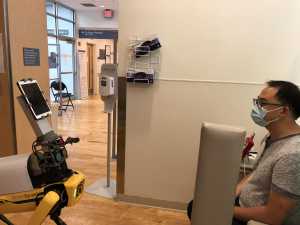MedicalResearch.com Interview with:
Ramani “Ram” Peruvemba, MD, FASA
Co-founder and CMO of HSR.
health
MedicalResearch.com: Would you tell us about your background?
Response: I am a dual-board certified Anesthesiologist and Pain Management physician, currently serving as the co-founder and CMO of
HSR.health. I am a Health IT expert and well-versed in the clinical, regulatory, and policy issues surrounding healthcare. I leverage my expertise, professional networks, and insights to HSR
.health to bring health risk information to industry.
As a clinician, I formerly served as Vice Chairman of the board for the largest anesthesia provider in Maryland and led them through a private equity transaction that helped elevate our group onto a national platform.
I have also served on the advisory boards of QSSI corp, a Health IT firm involved in the construction of Healthcare.gov and ultimately sold to Optum, as well as Welldoc, a digital health leader that developed the only FDA approved digital health solution for the management of diabetes. Through my role on the Maryland Health Services Cost Review Commissions Advisory Council, I play a key role in the development and implementation of the unique value based hospital payment system, the Total Cost of Care Model, in conjunction with CMS and CMMI.
I currently serve on the board of the Maryland State Medical Society, MedChi, as chairman of the medical policy council, and am the President of the Maryland Society of Anesthesiologists.
Most recently, I’m proud to share that I was named a 2021 Top 100 Healthcare Innovator for my leadership in HSR
.health's efforts supporting COVID-19 pandemic response globally.
(more…)









 Response: Point-of-care ultrasound is one of the most significant advances in bedside patient care, and its use is expanding across nearly all fields of medicine. In order to best prepare medical students for residency and beyond, it is imperative to begin POCUS training as early as possible. At the Lewis Katz School of Medicine at Temple University, we introduced POCUS education over a decade ago and have expanded it since then.
By providing each student with a Butterfly iQ device, we can augment our curriculum significantly. In addition to our robust pre-clinical sessions, now we will expand into the clinical years highlighting the utility of POCUS with actual patients.
This gift was made possible by the incredible generosity of Dr. Ronald Salvitti, MD ’63.
Response: Point-of-care ultrasound is one of the most significant advances in bedside patient care, and its use is expanding across nearly all fields of medicine. In order to best prepare medical students for residency and beyond, it is imperative to begin POCUS training as early as possible. At the Lewis Katz School of Medicine at Temple University, we introduced POCUS education over a decade ago and have expanded it since then.
By providing each student with a Butterfly iQ device, we can augment our curriculum significantly. In addition to our robust pre-clinical sessions, now we will expand into the clinical years highlighting the utility of POCUS with actual patients.
This gift was made possible by the incredible generosity of Dr. Ronald Salvitti, MD ’63. 





















